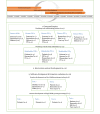A User-Centered Approach to an Evidence-Based Electronic Health Pain Management Intervention for People With Chronic Pain: Design and Development of EPIO
- PMID: 31961331
- PMCID: PMC7001051
- DOI: 10.2196/15889
A User-Centered Approach to an Evidence-Based Electronic Health Pain Management Intervention for People With Chronic Pain: Design and Development of EPIO
Abstract
Background: Chronic pain conditions are complicated and challenging to live with. Electronic health (eHealth) interventions show promise in helping people cope with chronic illness, including pain. The success of these interventions depends not only on the technology and intervention content but also on the users' acceptance and adherence. Involving all stakeholders (eg, patients, spouses, health care providers, designers, software developers, and researchers) and exploring their input and preferences in the design and development process is an important step toward developing meaningful interventions and possibly strengthening treatment outcomes.
Objective: The aim of this study was to design and develop a user-centered, evidence-based eHealth self-management intervention for people with chronic pain.
Methods: The study employed a multidisciplinary and user-centered design approach. Overall, 20 stakeholders from the project team (ie, 7 researchers, 5 editors, 7 software developers, and 1 user representative), together with 33 external stakeholders (ie, 12 health care providers, 1 health care manger, 1 eHealth research psychologist, and 17 patients with chronic pain and 2 of their spouses) participated in a user-centered development process that included workshops, intervention content development, and usability testing. Intervention content was developed and finalized based on existing evidence, stakeholder input, and user testing. Stakeholder input was examined through qualitative analyses with rapid and in-depth analysis approaches.
Results: Analyses from stakeholder input identified themes including a need for reliable, trustworthy, and evidence-based content, personalization, options for feedback, behavioral tracking, and self-assessment/registration as factors to include in the intervention. Evidence-based intervention content development resulted in one face-to-face introduction session and 9 app-based educational and exercise-based modules. Usability testing provided further insight into how to optimize the design of the intervention to the user group, identifying accessibility and a simple design to be essential.
Conclusions: The design and development process of eHealth interventions should strive to combine well-known evidence-based concepts with stakeholder input. This study, designing and developing the pain management intervention EPIO, illustrates how a stakeholder-centered design approach can provide essential input in the development of an eHealth self-management intervention for people with chronic pain.
Trial registration: ClinicalTrials.gov NCT03705104; https://clinicaltrials.gov/ct2/show/NCT03705104.
Keywords: Web-based interventions; acceptance and commitment therapy; chronic pain; cognitive behavioral therapy; eHealth; evidence-based, user-centered design approach; mobile apps; service design.
©Ingrid Konstanse Ledel Solem, Cecilie Varsi, Hilde Eide, Olöf Birna Kristjansdottir, Elin Børøsund, Karlein M G Schreurs, Lori B Waxenberg, Karen E Weiss, Eleshia J Morrison, Mette Haaland-Øverby, Katherine Bevan, Heidi Andersen Zangi, Audun Stubhaug, Lise Solberg Nes. Originally published in the Journal of Medical Internet Research (http://www.jmir.org), 21.01.2020.
Conflict of interest statement
Conflicts of Interest: None declared.
Figures





Similar articles
-
Patients' Needs and Requirements for eHealth Pain Management Interventions: Qualitative Study.J Med Internet Res. 2019 Apr 1;21(4):e13205. doi: 10.2196/13205. J Med Internet Res. 2019. PMID: 30877780 Free PMC article.
-
A Stress Management App Intervention for Cancer Survivors: Design, Development, and Usability Testing.JMIR Form Res. 2018 Sep 6;2(2):e19. doi: 10.2196/formative.9954. JMIR Form Res. 2018. PMID: 30684438 Free PMC article.
-
Digital Self-Management in Support of Patients Living With Chronic Pain: Feasibility Pilot Study.JMIR Form Res. 2020 Oct 23;4(10):e23893. doi: 10.2196/23893. JMIR Form Res. 2020. PMID: 33094734 Free PMC article.
-
Perceptions of Smartphone User-Centered Mobile Health Tracking Apps Across Various Chronic Illness Populations: An Integrative Review.J Nurs Scholarsh. 2017 Jul;49(4):371-378. doi: 10.1111/jnu.12298. Epub 2017 Jun 12. J Nurs Scholarsh. 2017. PMID: 28605151 Review.
-
Toward Inclusive Approaches in the Design, Development, and Implementation of eHealth in the Intellectual Disability Sector: Scoping Review.J Med Internet Res. 2023 May 30;25:e45819. doi: 10.2196/45819. J Med Internet Res. 2023. PMID: 37252756 Free PMC article.
Cited by
-
Combining Persuasive System Design Principles and Behavior Change Techniques in Digital Interventions Supporting Long-term Weight Loss Maintenance: Design and Development of eCHANGE.JMIR Hum Factors. 2022 May 27;9(2):e37372. doi: 10.2196/37372. JMIR Hum Factors. 2022. PMID: 35622394 Free PMC article.
-
Short-Term Findings From Testing EPIO, a Digital Self-Management Program for People Living With Chronic Pain: Randomized Controlled Trial.J Med Internet Res. 2023 Aug 25;25:e47284. doi: 10.2196/47284. J Med Internet Res. 2023. PMID: 37624622 Free PMC article. Clinical Trial.
-
Development of a Management App for Postviral Fibromyalgia-Like Symptoms: Patient Preference-Guided Approach.JMIR Form Res. 2024 Apr 19;8:e50832. doi: 10.2196/50832. JMIR Form Res. 2024. PMID: 38639986 Free PMC article.
-
Physical Therapists' Opinion of E-Health Treatment of Chronic Low Back Pain.Int J Environ Res Public Health. 2021 Feb 16;18(4):1889. doi: 10.3390/ijerph18041889. Int J Environ Res Public Health. 2021. PMID: 33669249 Free PMC article.
-
Evidence-based digital support during 1 year after an Interdisciplinary Pain Rehabilitation Programme for persons with chronic musculoskeletal pain to facilitate a sustainable return to work: a study protocol for a registry-based multicentre randomised controlled trial.BMJ Open. 2022 Apr 25;12(4):e060452. doi: 10.1136/bmjopen-2021-060452. BMJ Open. 2022. PMID: 35470201 Free PMC article.
References
-
- Dansie EJ, Turk DC. Assessment of patients with chronic pain. Br J Anaesth. 2013 Jul;111(1):19–25. doi: 10.1093/bja/aet124. https://linkinghub.elsevier.com/retrieve/pii/S0007-0912(17)32962-8 - DOI - PMC - PubMed
-
- Kress HG, Aldington D, Alon E, Coaccioli S, Collett B, Coluzzi F, Huygen F, Jaksch W, Kalso E, Kocot-Kępska M, Mangas AC, Ferri CM, Mavrocordatos P, Morlion B, Müller-Schwefe G, Nicolaou A, Hernández CP, Sichère P. A holistic approach to chronic pain management that involves all stakeholders: change is needed. Curr Med Res Opin. 2015;31(9):1743–54. doi: 10.1185/03007995.2015.1072088. - DOI - PubMed
Publication types
MeSH terms
Associated data
LinkOut - more resources
Full Text Sources
Medical

